And now it’s back to research and writing
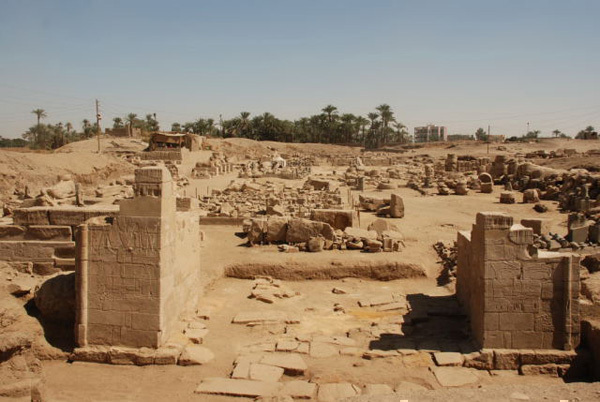
The season is over. We finished digging on Tuesday and spent the rest of this week cleaning up, checking notes and taking final photographs. Our major achievements this season were the restoration of the Taharqa Gate and Chapel D and the excavation of part of the area to its west. You are looking at the west face of the gate across the front area of the precinct to Temple A in the background.
As enjoyable as it is, excavation is only one part of archaeological exploration. After fieldwork comes research back home on what has been found and – most important – publication of the results so that others can benefit from the work.
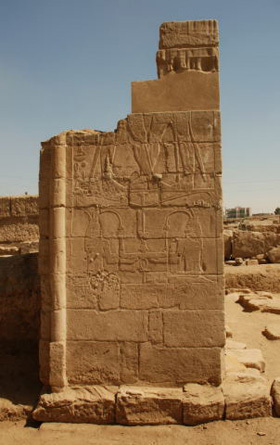
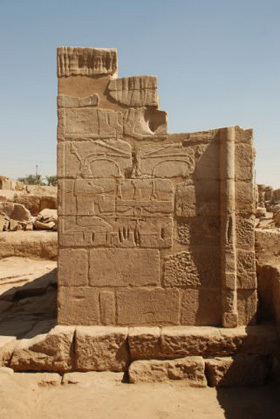
The west faces of the north (left) and south wings of the gate, taken in the afternoon when the sun illuminates the reliefs. The god on the north wing now has a head and shoulders and the king and goddess on the south wing have their feet back. The top block on the south wing restores part of the goddess’s body, although the deep gouges in the stone make it hard to see.
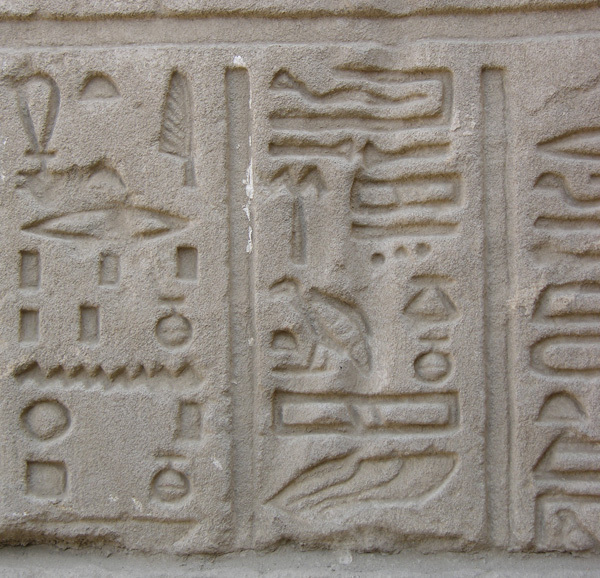
In pharaonic times and perhaps even later, people believed that the stones of a temple were imbued with power and would scratch temple walls to obtain bits of stone to use for healing and purposes requiring the intervention of the gods. Over the years such scratching produced the deep gouges you see on many temple walls in Egypt. This Ptolemaic inscription in the Propylon (the precinct’s entrance) was actually carved over one such gouge.
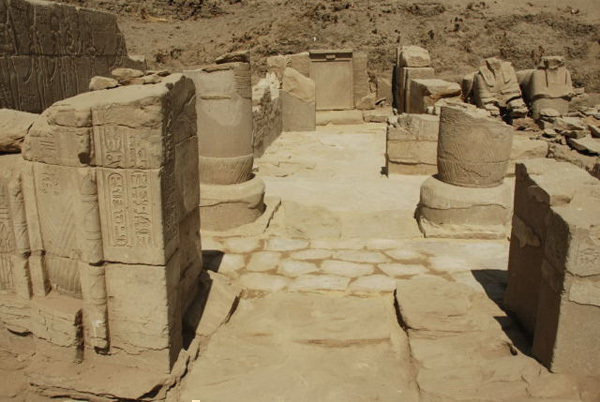
Khaled and his team finished work on Chapel D as well this week, laying new paving where the original was too damaged to preserve. We thank Khaled, the masons Mohammed Gharib and Sayed Ahmed Sebbak and the rest of the restoration team for all their hard work this season.
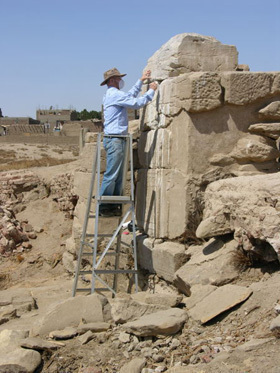
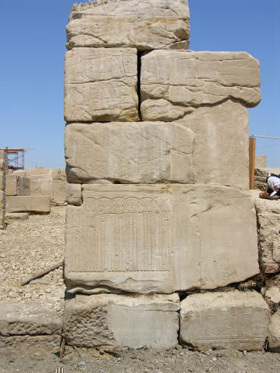
With the work on the Taharqa Gate done and all the small finds treated, John had time in the last week to tackle another project that we have been wanting to do for several years: removing the bird droppings that have long defaced the facade of the Contra Temple, built against the Mut Temple’s rear wall. This rather unpleasant task was made more difficult by having to be done while standing on a ladder. You can see the success of his efforts on the right.
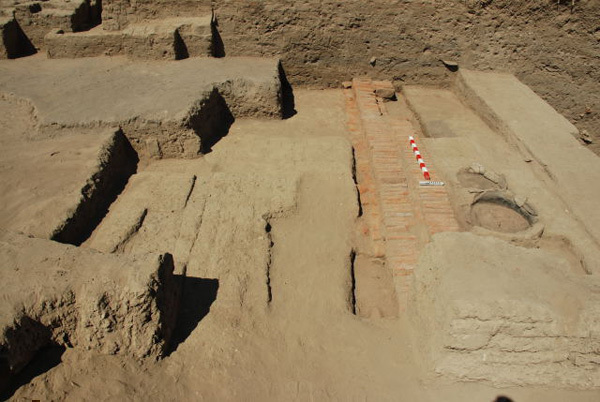
We can’t even begin to guess what this complex south of the Taharqa Gate area is: we just don’t have enough of it. All we know is that it is bounded on the north by the south wall of the gate area (right in the photo) and on the east by the north-south wall parallel to the Taharqa Gate wall (foreground; the gap is a cut we made to determine how these walls related to each other) and that it is earlier than the buildings to its south, a portion of which are visible in the upper left corner with a thick layer of grey ash in front of them.
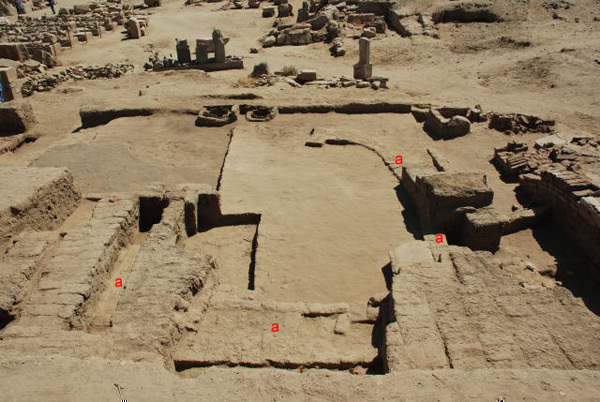
Here are the southern structures at the end of the season, seen from the west. We now believe that the walls marked (a) all belong to the same phase of construction, as does the plaster floor in the center. The remaining brick walls are later constructions whose sequence is still unclear. It is certain, however, that there was an open space between the mud brick buildings and the baked brick building on the right. We have been following the thick layer of grey ash seen in the previous photo across this area as well, where it appears to continue below the plaster floor. Such distinctive features are very useful in helping to determine the relation among various levels of construction.
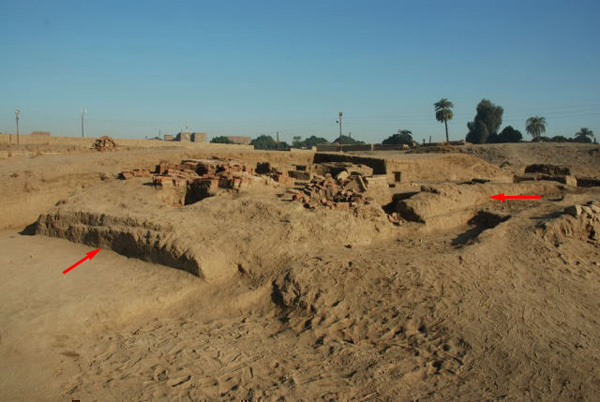
The baked brick building, too, remains enigmatic. This view to the NW shows the south face of the northern Tuthmoside enclosure wall (left arrow) with the baked brick building built on it. The wall that forms the eastern boundary of the structures associated with this building is indicated by the arrow on the right. This wall runs to the Taharqa Gate parallel with the gate’s own wall.
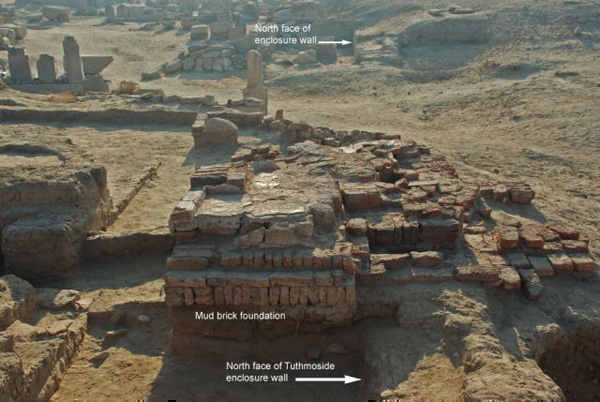
Here you are looking east at the same area showing the mud brick foundations of the northern side of the building, the gap between it and the mud brick structures to the north, and the north face of the Tuthmoside enclosure wall, which lines up with the Mut Temple’s 1st Pylon.
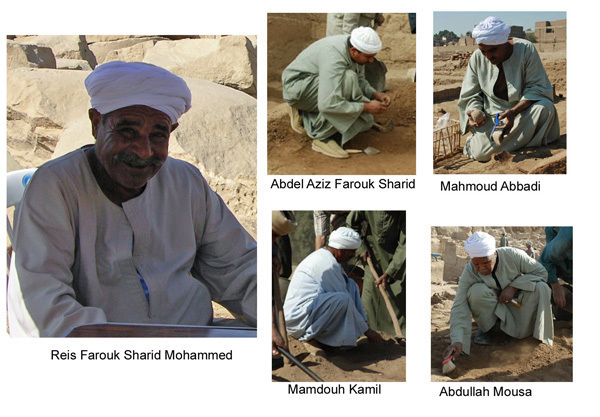
I want to take this opportunity to thank the Qufti, the skilled technicians who have worked with us for many years and have become fast friends. Foremost among them, of course, is our foreman, Farouk Sharid Mohammed, who has been with us since the beginning and whose friendship and talents we value highly. The Qufti do superb work in often trying conditions and with great good humor. Excavating at Mut would be impossible without them.
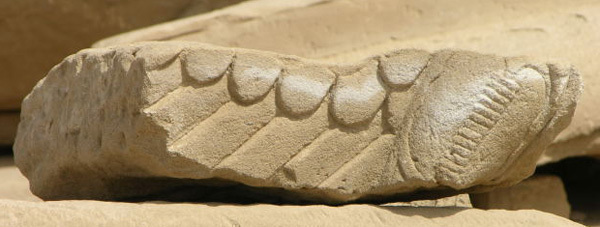
When we were in the Amun Precinct last week we came across this block that at first puzzled us. Since it has been a puzzling season, I thought I’d include it here. Can you tell what it is? The answer is at the end of the posting.
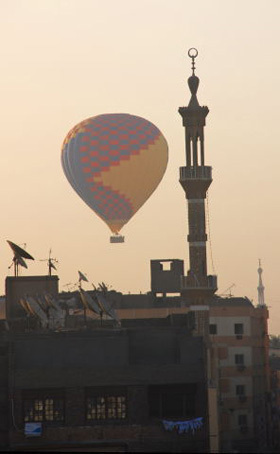
One morning this brightly colored balloon drifted east across the river. What a sight to see before breakfast.
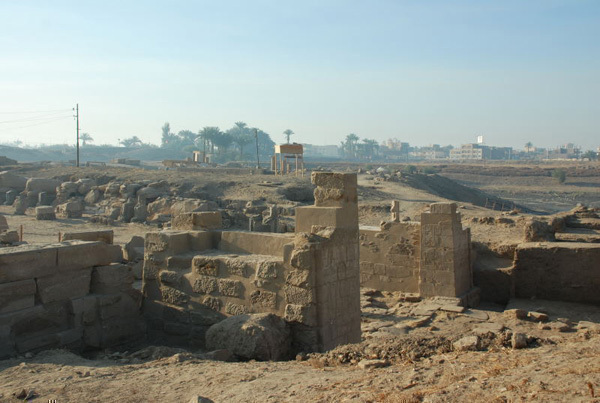
And for the final shot of the season, another view of the Taharqa Gate taken early in the morning at the end of the season. We will miss the beauty of the Mut Precinct but look forward to coming back next year.
The answer to the block puzzle: it’s part of a relief of a winged sun-disk with cobras hanging from each side of the disk – a common motif but an unusual fragment. What we have here is wing feathers and part of the cobra’s body.
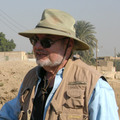
Richard Fazzini joined the museum as Assistant Curator of Egyptian Art in 1969 and served as the Chairman of Egyptian, Classical and Ancient Middle Eastern Art from 1983 until his retirement in June 2006. He is now Curator Emeritus of Egyptian Art, but continues to direct the Brooklyn Museum’s archaeological expedition to the Precinct of the Goddess Mut at South Karnak, a project he initiated in 1976. Richard was responsible for numerous gallery installations and special exhibitions during his 37 years at the museum. An Egyptologist specialized in art history and religious iconography, he has also developed an abiding interest in the West’s ongoing fascination with ancient Egypt, called Egyptomania. Well-published, he has lectured widely in the U.S. and abroad, and served as President of the American Research Center in Egypt, America’s foremost professional organization for Egyptologists.
